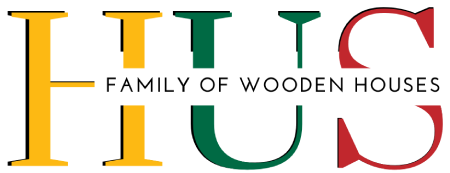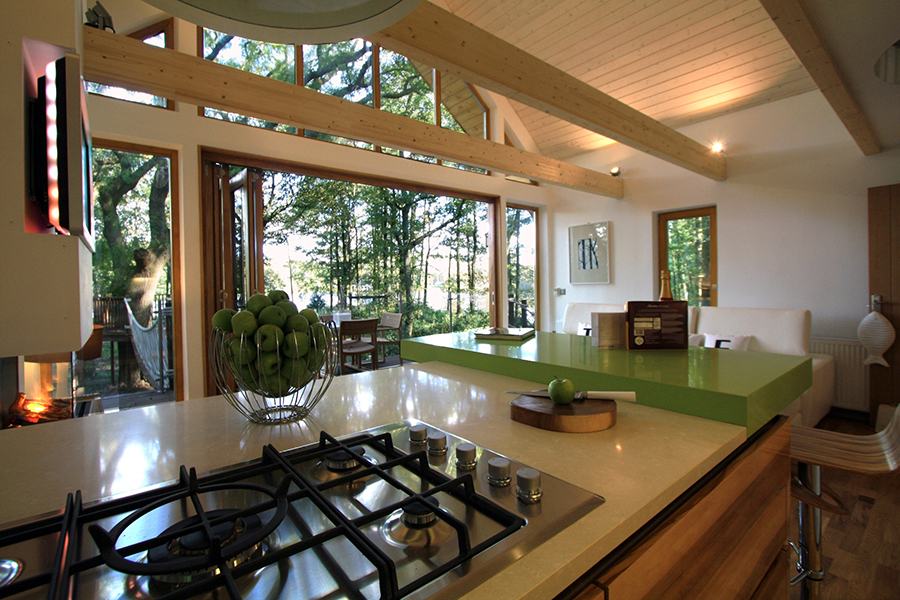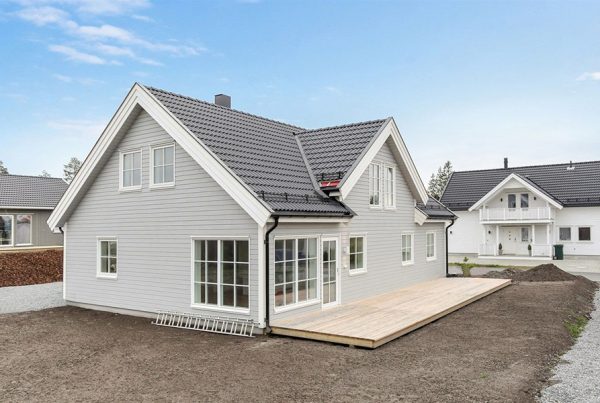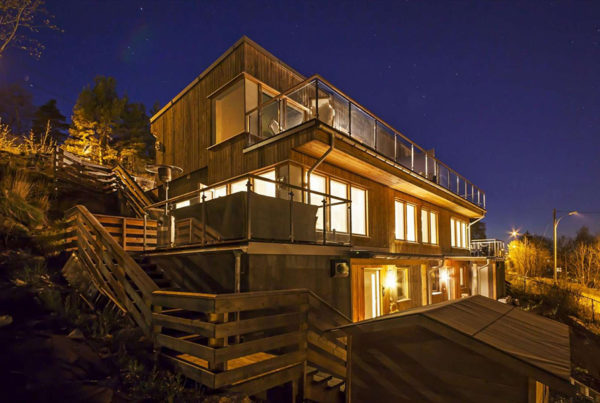The first question that arises when building a house is what type it shall be? It all becomes clear when you list all the preferred features of the house on paper. At the top of the list, we are sure, you will list things like stylish, original architecture, cozy, warm, low maintenance required, low-performance costs. The majority of you will not forget about sustainability and ecology, natural building materials. A building material that represents all of those features is wood. Thus, timber frame technology shall be your number one choice.
The advantages of the Timber Frame construction
-
Robust and reliable construction
It is successfully replacing block and steel constructions. Timber frames are characterized by extremely high durability and reliability. When built properly, wood constructions and materials are strong and resistant to the environment.
-
Thermal Insulation
In addition to being structurally strong, timber frame walls will exhibit excellent U values thanks to insulation between studs. Thin lightweight cladding options will make even thinner walls possible whilst maintaining thermal performance. As an added benefit, the walls are thinner, the floors are bigger, and the materials are fewer, so the cost is reduced.
-
Airtightness and vapor control
Timber frame construction is one of the most air-tight constructions. The windproof membrane is installed on the external side of the wall taping the connections and gaps with special tape. This prevents convective heat loss from the building. Also, another membrane for vapor control is installed on the internal side of the wall that controls condensation. This vapor barrier also benefits the airtightness of the house.
-
Cost savings
The economy manifests itself in two stages: during build-up and further performance. Many construction companies and architects choose panel-frame houses because of the fast and cost-effective construction option: work in a factory is well organized and perform the highest and most precise quality; manufacture runs according to the software produced detail drawings diminishing mistakes; materials needed for offsite production are estimated in advance and result in fewer quantities needed and less waste; no influence of weather conditions on materials; minimal tools and machinery are required for assembly of panels and there is no money wasted on downtime. When timber frame house is finished it is also economically performing: low heating costs, low maintenance required.
-
Renewable source
Wood – ecological, renewable, the natural raw material closest to man, creating a safe environment for health. For those reasons wood never misplaces its popularity compared to other building materials.
-
Design flexibility and aesthetics
The timber frame can be easily applied both in a chic classic or modern style home and in creating ascetic, Scandinavian designs. Timber Frame allows for complex architectural solutions. Wood can be varnished, painted, and otherwise decorated according to individual design and style ideas. Timber frame houses can have limitless external cladding options such as brick, stone, render, and not only wood.
Due to the many advantages, such as energy efficiency, air-tightness, warmth, durability, and eternal aesthetics, the timber frame is suitable for the construction of both individual residential houses and schools, kindergartens, hotels, leisure buildings, and even garden offices.





